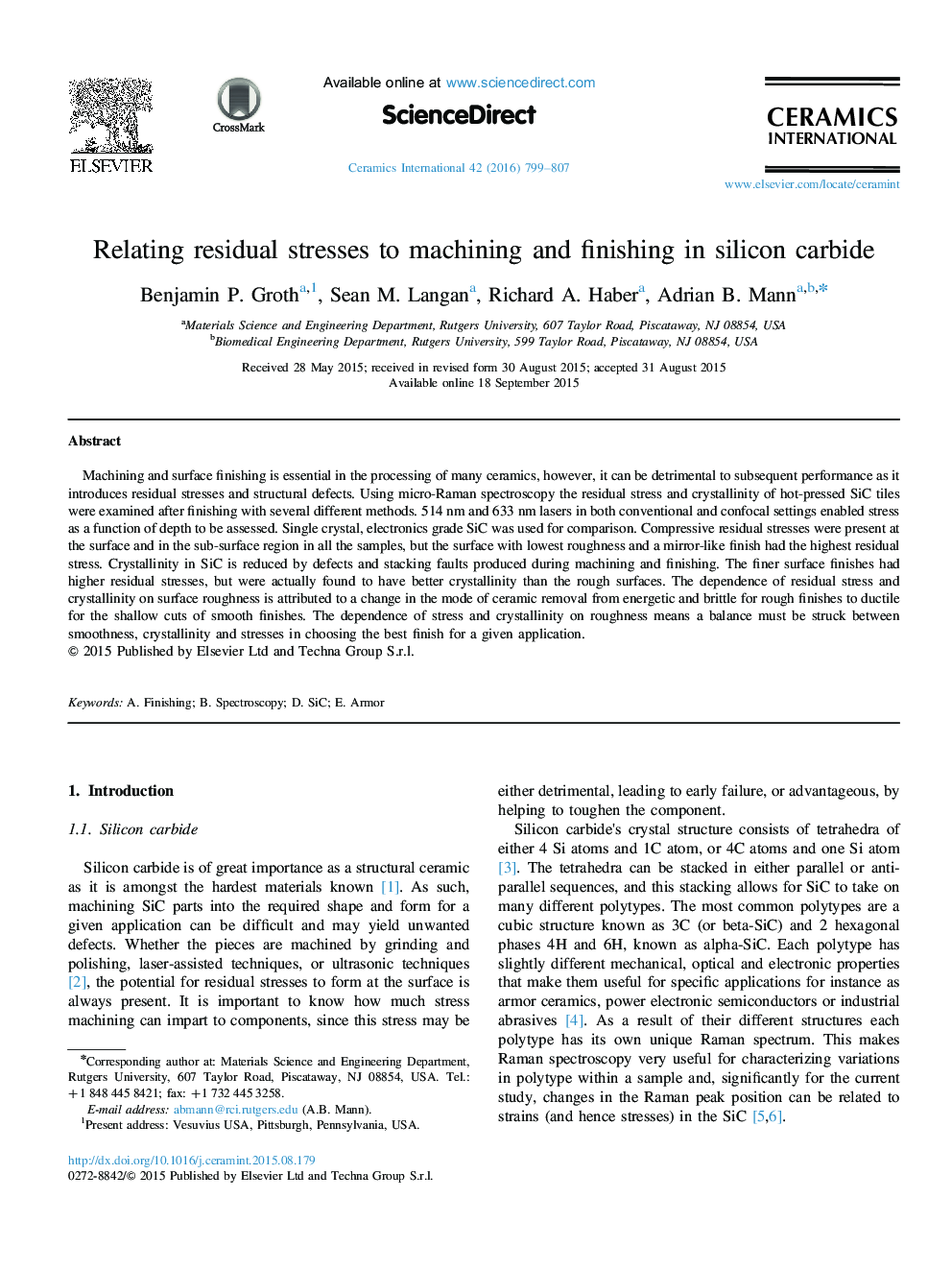| کد مقاله | کد نشریه | سال انتشار | مقاله انگلیسی | نسخه تمام متن |
|---|---|---|---|---|
| 1459494 | 989593 | 2016 | 9 صفحه PDF | دانلود رایگان |
Machining and surface finishing is essential in the processing of many ceramics, however, it can be detrimental to subsequent performance as it introduces residual stresses and structural defects. Using micro-Raman spectroscopy the residual stress and crystallinity of hot-pressed SiC tiles were examined after finishing with several different methods. 514 nm and 633 nm lasers in both conventional and confocal settings enabled stress as a function of depth to be assessed. Single crystal, electronics grade SiC was used for comparison. Compressive residual stresses were present at the surface and in the sub-surface region in all the samples, but the surface with lowest roughness and a mirror-like finish had the highest residual stress. Crystallinity in SiC is reduced by defects and stacking faults produced during machining and finishing. The finer surface finishes had higher residual stresses, but were actually found to have better crystallinity than the rough surfaces. The dependence of residual stress and crystallinity on surface roughness is attributed to a change in the mode of ceramic removal from energetic and brittle for rough finishes to ductile for the shallow cuts of smooth finishes. The dependence of stress and crystallinity on roughness means a balance must be struck between smoothness, crystallinity and stresses in choosing the best finish for a given application.
Journal: Ceramics International - Volume 42, Issue 1, Part A, January 2016, Pages 799–807
